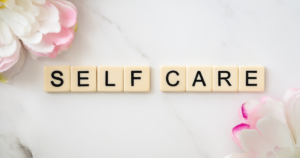Importance of Effective Communication
Mastering communication skills is like having a magical key to unlock doors in both personal and professional realms. Knowing how to express oneself clearly and listen effectively offers a lot of perks, especially when dealing with work scenarios and disagreements.
Advantages in Business
In business, effective communication is a game-changer for getting things done and keeping the atmosphere upbeat. When folks have the right tools and support, their productivity shoots up, giving the company’s performance a nice boost, according to the folks at USC. You remember those times when a simple memo or a quick team huddle made all the difference? That’s the magic of good communication.
Plus, making communication a priority at work can spark employee satisfaction, sharpen social skills, bring teams closer, and transform the workplace vibe. Less drama, more harmony. And retaining talent becomes much easier. When people are encouraged to communicate well, it fosters trust, respect, and teamwork, which can also improve problem-solving and strengthen both social and emotional bonds (HelpGuide.org).
Conflict Resolution Benefits
When it’s time to sort out a dispute, communication skills are your best friend. Most workplace tiffs kick off because folks aren’t on the same page. That’s why polishing up on communication can be a lifesaver, helping to smooth over misunderstandings and maintain a peaceful work environment (USC).
And don’t forget, being able to chat efficiently with top brass can be a big career jackpot. Building solid communication pathways with the higher-ups can foster trust and may even pave the way for moving up the career ladder (USC).
Overall, recognizing just how beneficial solid communication can be in handling business affairs and settling conflicts shows how important clear and concise interactions are in achieving goals and nurturing positive relationships.
Verbal vs. Non-Verbal Communication
When it comes to chatting it up, we tend to rely on two main styles: the yapping (verbal) and the countless silent signals we dish out (non-verbal). Both are pretty darn important—they’re like the peanut butter and jelly of getting our point across, figuring out what others are up to, and building solid connections. Let’s talk about how words and those sneaky, unspoken signals can make or break our interactions.
Power of Verbal Communication
Talking isn’t just making noise; it’s like wielding the Excalibur of relaying info, spilling your guts, and having those heart-to-heart or critical discussions. According to CSUMB HR, it’s using your chat prowess to spread thoughts, dreams, and emotions. Acing this skill isn’t only about the vocab you throw around; it’s about the vibe and purpose that accompany your words.
If we nail the art of yakking, we can forge bonds that last a lifetime, whether we’re at work or just hanging out. Being all ears and making sure everyone’s on the same wavelength can help keep the chat train rolling, moving beyond simple (and sometimes awkward) exchanges.
Influence of Non-Verbal Cues
Now, let’s not ignore the silent but powerful world of non-verbal clues, as CSUMB HR hints at (seriously, take a look: CSUMB HR). This includes the expressive dance that is our body, eyebrows doing the tango, gazes that can melt or freeze, and that magic touch called tone. Every move counts in telling the other person, “Hey, here’s what I mean.”
Handling these non-wordy parts adds a twist of authenticity to how we interact, especially when it’s about feelings or making a solid bond. When we read and use these cues well, we send out signals that are loud and clear without saying a word. Riding the verbal and non-verbal wave ensures we say what we mean and mean what we say, connecting on a real level, swinging the communication prowess pendulum to awesome, and making sure life ain’t just small talk and missed signals.
Strategies for Effective Communication
So, you’re ready to jazz up your chat game, huh? Let’s dabble in the land of speaking and listening, where active listening and emotional savvy make the magic happen in our conversations.
Active Listening Skills
We’re not just talking about nodding along like a bobblehead when someone else chats. Active listening means really getting into the groove of what’s being said, feeling the vibe, and catching the unsaid stuff too. According to HelpGuide, this isn’t just a nice-to-have; it’s an essential baseline. By fully soaking up what others say, we can build those “aha” connections and really get what’s ticking behind the words.
Here’s a cherry on top: A study from the Centre for Teaching Excellence, University of Waterloo showed that when teachers in training work on active listening, their skills shoot up. Plus, teams that latch onto active listening see a huge jump in satisfaction and have more get-up-and-go, with a 20% and 30% hike, says Vorecol. Also, those teams have people stick around longer—25% better, to be exact (Vorecol).
Get into active listening, and you can easily walk in another’s shoes, see eye-to-eye, and really nail down what they need. It’s about building trust and making sure we all end the day on the same page. That trust and understanding make a chill, team-player vibe for everyone involved.
Emotional Intelligence in Communication
Be a mind-reader! Just kidding. But having a sixth sense for emotions in conversations makes all the difference. Asana says that being street smart with emotions—knowing what the other person feels while chatting—really polishes your talk skills. Recognizing feelings and intentions in talks means you’re likely to truly hear someone and make them feel special.
Master the dance between listening and leading as you converse. LinkedIn reminds us to stay tuned to our feelings and catch those unspoken signs. With that empathetic vibe, we foster connections and get into some meaningful chinwags.
Constant self-improvement is the secret sauce to mastering emotions in talks. Fine-tuning how we read-between-the-lines and dialing in on how we say things based on who we’re chatting with and what’s happening hones our communication game. Keep polishing those skills, and you’ll be the go-to person for chats that really count.
Enhancing Communication Skills
Boosting our communication game is key to connecting better and forming solid bonds. Let’s chat about two vital things: being straight-up assertive and crystal-clear in how we communicate.
Assertive Expression
Being assertive isn’t about being bossy or pushy—it’s about leveling up how we connect with others. It’s all about saying what’s on our mind without crossing the line, respecting others, and making sure our voices are heard. When we’re assertive, we’re paving the way for better self-esteem and sharper decision-making. We build vibes where everyone feels safe to share their thoughts.
According to HelpGuide.org, being assertive is like a secret sauce for getting your message across. It helps establish boundaries and earn trust. When we embrace assertive expression, we stroll through chats with our heads high, leading to richer, more productive dialogues.
Clear Communication Techniques
Getting our message across involves more than just words. We need to be as clear as day. This means avoiding jargon, sticking to the point, and making sure our ideas flow nicely. Clear communication stops misunderstandings, keeps the peace, and cranks up how effective we are when we chat.
Real communication means listening up, showing empathy, and grasping those complex social vibes. As highlighted by Asana, honing clear communication techniques bridges any gaps, backs up informed decisions, and builds stronger ties, whether at work or elsewhere.
Getting comfy with assertiveness and clear communication opens doors to stronger connections and a space where ideas flow freely. It’s like a never-ending project—a bit of patience, a lot of practice, and a commitment to saying things right and respectfully.
Impact of Listening in Communication
Let’s chat about how listening changes the way we communicate. When we truly listen, like, actually pay attention, it lifts our interactions and helps things go smoother, at work and beyond.
Benefits of Active Listening
You’ll find some interesting numbers if you look at what active listening can do in a work setting. Picture this: a survey from 2020 revealed teams that really listened to each other saw their happiness at work shoot up by 20%, while getting more done jumped by 30% (Vorecol). It’s not just talk. Digging into conversations with coworkers or business partners can genuinely shake things up.
And here’s more: The University of Minnesota reported that when listening is a big deal in a place, teamwork can bump up by 50%. Plus, you’ve got fewer mess-ups, like 35% less, just because folks make sure they hear each other out (Vorecol).
Increasing Employee Satisfaction
You know, keeping people happy at work is mega important. Active listening is a game changer there. Gallup showed us that when people feel listened to, they stick around way longer—like a 25% drop in the number leaving their jobs (Vorecol). All ears means a team feels seen and appreciated, making the workplace friendlier and boosting loyalty too.
The International Journal of Listening put it out there that a whopping 70% of employees feel like nobody’s listening to them. Shuffling into the listening lane could boost what gets done at work by up to 55% (Vorecol).
When we put active listening front and center in how we talk to each other, we see better teamwork and more meaningful connections. So why not make listening a guaranteed winner for everyone on the team?
Balancing Listening and Leading
In chatting with others, it’s like dancing—sometimes you take the lead, and other times you follow along. Getting this groove right isn’t just useful for heart-to-hearts; it’s a game-changer at work too. We’re about to dig into why hitting the sweet spot between hearing folks out and steering the convo is key—and how you can bounce with the beat, whatever the situation.
Finding the Right Groove
Listening well is kinda like having a superpower. It lets you tune into what others are really about—their hopes, struggles, and dreams. Folks on LinkedIn say that paying attention to others helps build trust and makes relationships stronger. This isn’t just for coffee chats but boosts teamwork too.
But while you’re tuning into others, you also gotta know when to step in and guide the flock with empathy and clarity. As folks on LinkedIn put it, having a clear voice is like having a lighthouse in social mazes—be it with your kids, as a boss, or hanging with friends.
When you nail the art of listening and leading, you get the knack for reading the room. This means becoming a whiz at exchanging ideas, whether you’re just hanging with pals or deep in work mode. Mastering this balance gives you the power to roll with the punches, making your chats richer and more real.
Rolling with the Situation
Rolling with communication means keeping an eye on those sneaky non-verbal messages you send out. Yep, those little eyebrow blips and nods can speak volumes depending on how the vibe shifts. So it’s all about tuning in and changing your game plan based on the silent feedback dance.
The folks on LinkedIn reckon that asking others how you’re doing can help improve how you come across without saying a word. Getting the hang of non-verbal vibes in different situations and tweaking your style keeps your communication sharp and spot-on.
Whether you’re speaking or just sharing a look, learning to read the room and switch things up ensures your message hits home. Being in tune with what’s going on around you, while welcoming feedback, helps you duck and weave through any chat hiccups and forge tighter bonds with folks around you.




